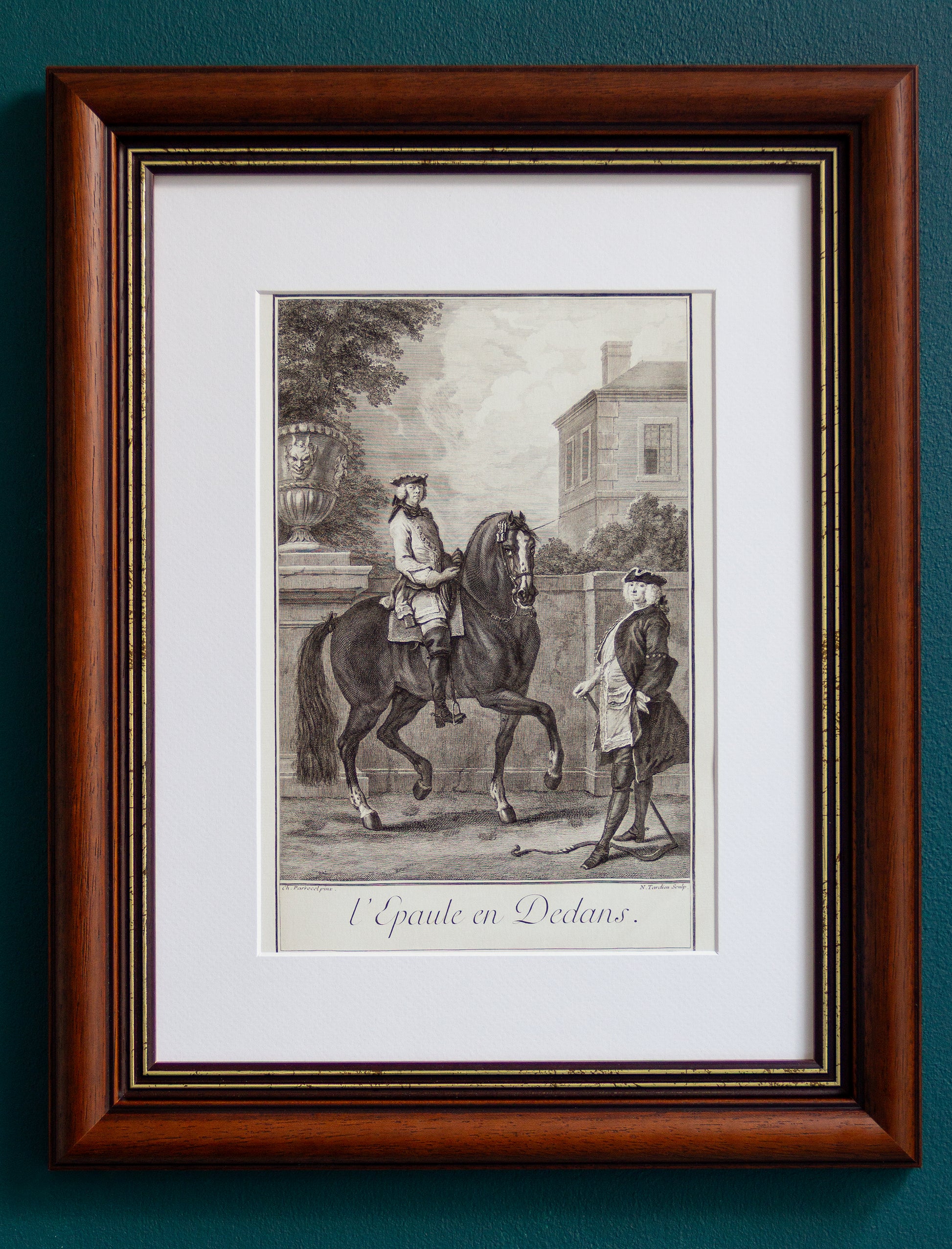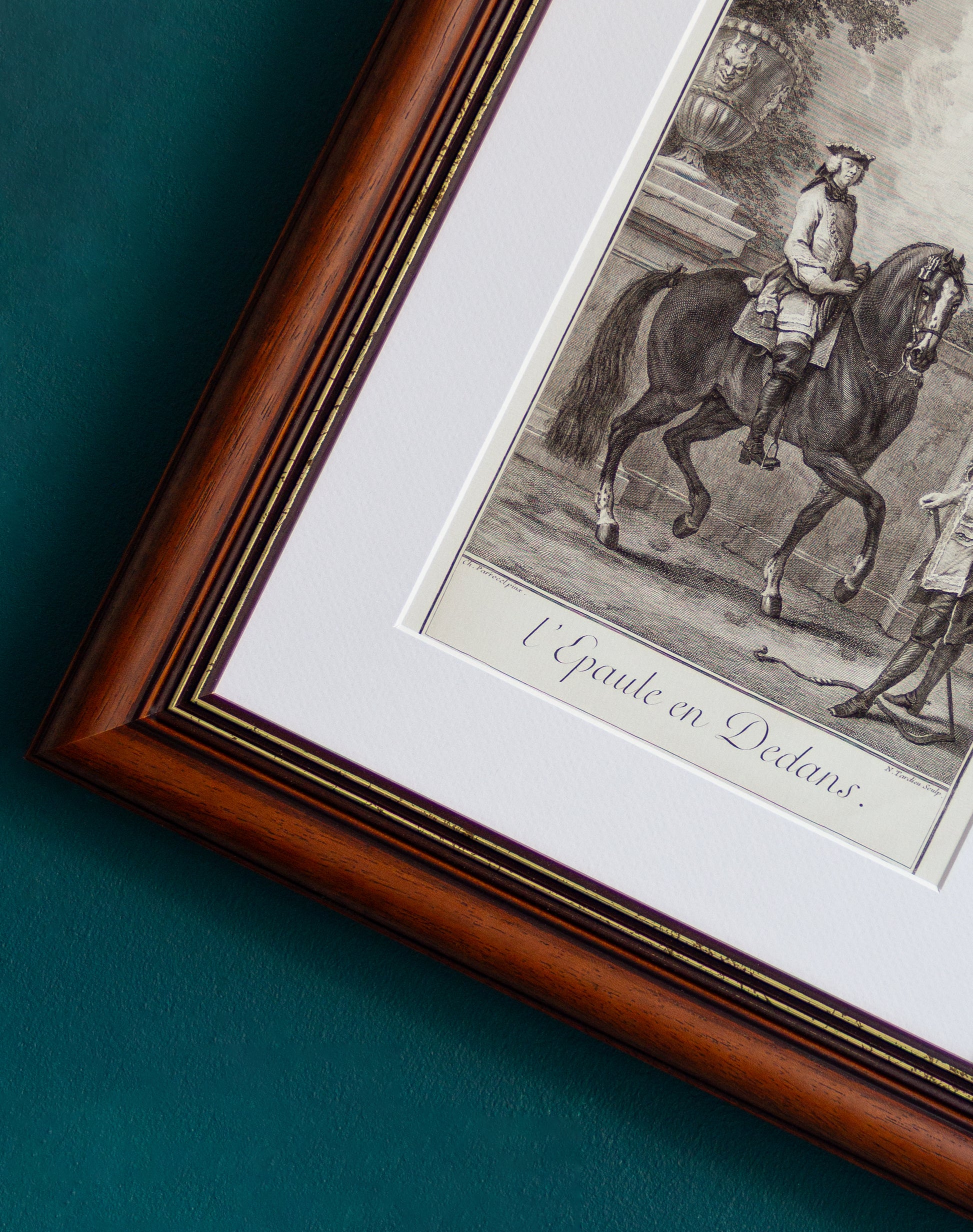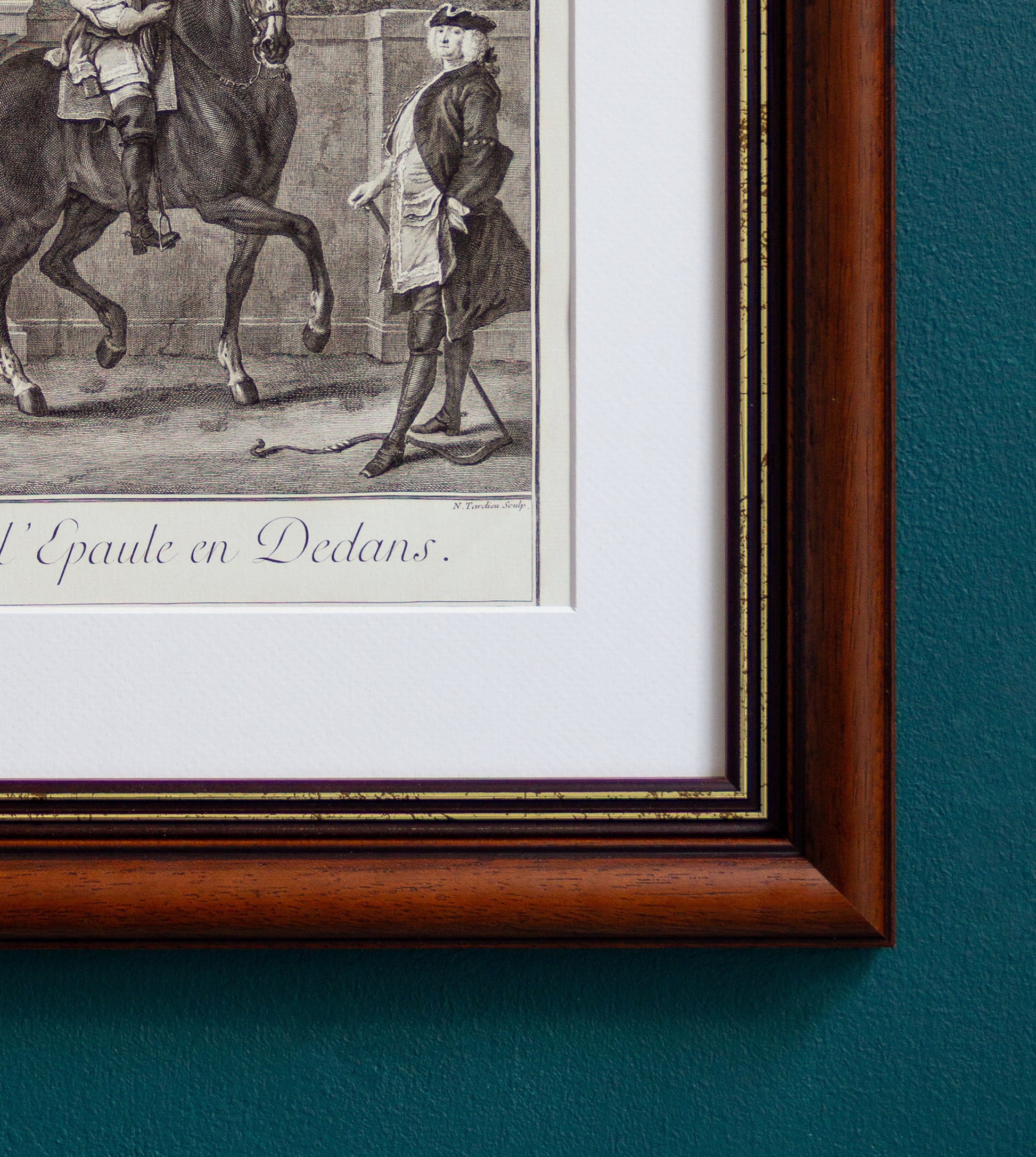De La Guérinière Prints | The Shoulder-in
De La Guérinière Prints | The Shoulder-in
The listed price is for the unframed fine art print only. Dimensions reflect the full size of the print, including any borders. The borders may appear larger or smaller than shown in product images, depending on the print size you select.
Couldn't load pickup availability
Print Quality & Materials
Print Quality & Materials
Expertly printed on luxurious 200gsm fine art paper with an elegant smooth finish, each piece is produced using a museum-grade giclée process. We use only the highest quality UV- or pigment-based inks, ensuring exceptional color depth and archival longevity: creating resistance to fading for over a century under suitable conditions.
Choosing the Right Size
Choosing the Right Size
We offer our prints in two size formats: inches and centimeters. If you’re in a region where inches are the framing standard (such as the US), we recommend selecting the inch-based sizes. For countries using the metric system, the centimeter variants are the best choice.
Our prints are designed to fit standard frame sizes, including those with or without a passe-partout (mat). For the most refined presentation, we recommend using a passe-partout, as it enhances the artwork’s visual impact.
Please note that for the common 20 x 29 cm passe-partout window, our A4 print size (21 x 29.7 cm) fits optimally.
For a 29 x 39 cm window, our 30 x 40 cm prints are the best choice.
Please note that some borders might be visible, based on the artwork. We design our products to accommodate to modern frames, but this is sometimes unavoidable based on the original dimensions of the artwork.
Among the many movements described in L’École de Cavalerie, the shoulder-in stands out as perhaps the most influential. Often associated with François Robichon de La Guérinière, it is frequently (though mistakenly) credited as his invention. In truth, the exercise had been discussed by earlier masters such as Antoine de Pluvinel and William Cavendish, the 1st Duke of Newcastle (1593–1676), whom de La Guérinière explicitly references in his writings. What distinguishes de La Guérinière’s approach is his use of the shoulder-in on a straight line, instead of his predecessors that described the exercise on a circle. The effectiveness of the exercise caused it to be a highly influential variant among equestrian enthusiasts, and why it is still one of the cornerstones of any form of dressage.
The image of shoulder-in from the famous L’École de Cavalerie is a masterful visual representation of one of classical dressage’s most essential and enduring exercises. It is is both a study in movement and a quiet tribute to the refinement of equestrian art.
More about the movement
More about the movement
Whether or not he originated this version remains uncertain, yet he is among the first to advocate its superiority. He argued that this alignment offers more effective suppling of the shoulders, as the hindquarters remain straighter and better positioned to carry weight: a key component in developing collection.
In this, de La Guérinière respectfully disagreed with both the Duke of Newcastle and Salomon de La Broue (1530–1610), another esteemed French écuyer. He maintained that the shoulder-in, by engaging the inside legs in lateral movement, teaches the horse to respond to the inside leg, shifts weight toward the haunches, and develops suppleness throughout the body. In his own words:
“This lesson of the shoulder-in produces so many good results at once, that I regard it as the first and last of the lessons to be given to the horse to give them complete suppleness and a perfect freedom in all parts of his body.”
More about the rider
More about the rider
The engraving shown here is something of an exception in the École de Cavalerie series — it does not name or depict a specific rider. This absence is noteworthy, particularly given the prominence of the shoulder-in in de La Guérinière’s method. It is possible he had hoped to secure a patron willing to appear in this celebrated position but was unsuccessful. One might even speculate that the figure on the right, whose profile bears resemblance to known portraits of de La Guérinière, was intended as a discreet self-portrait.
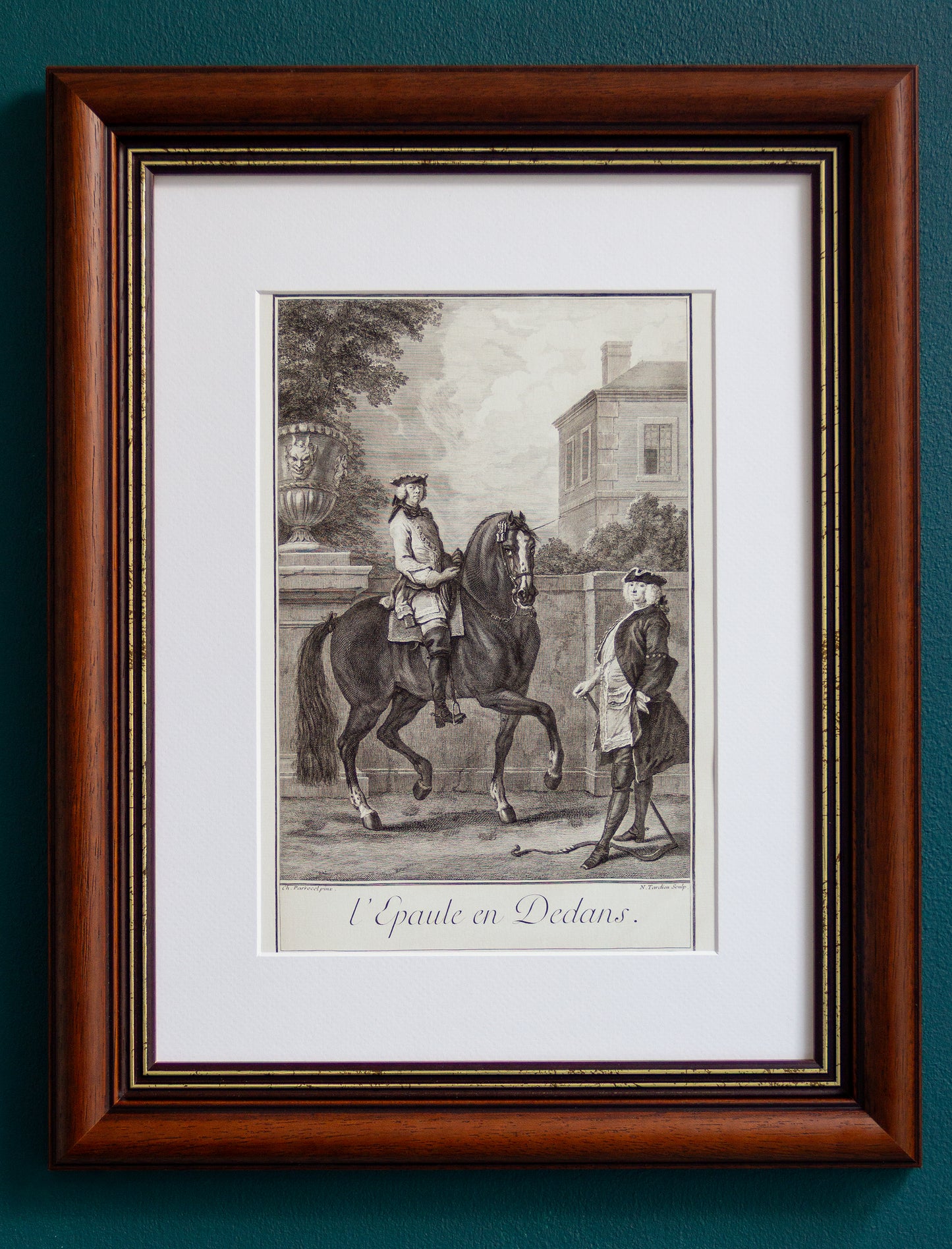
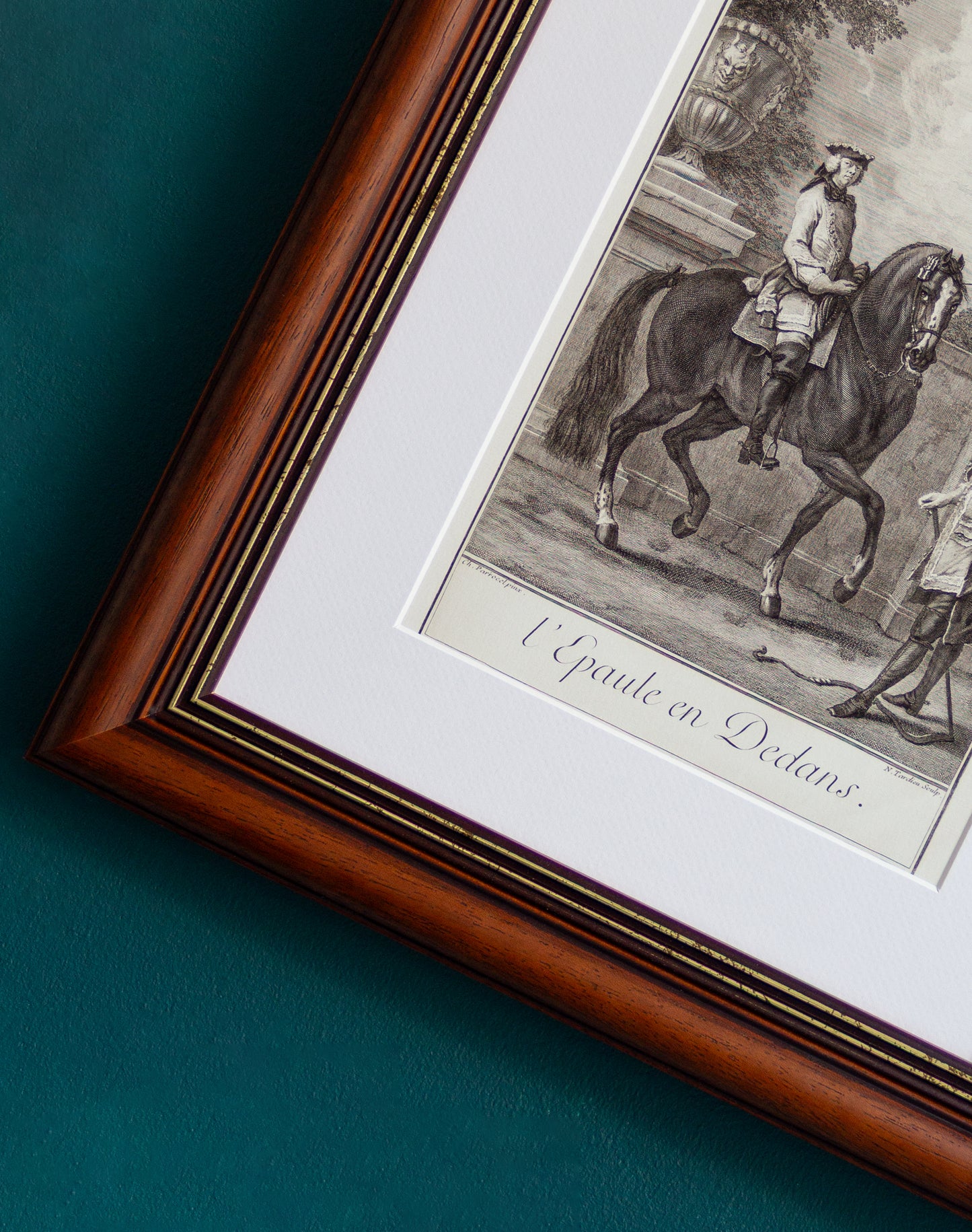

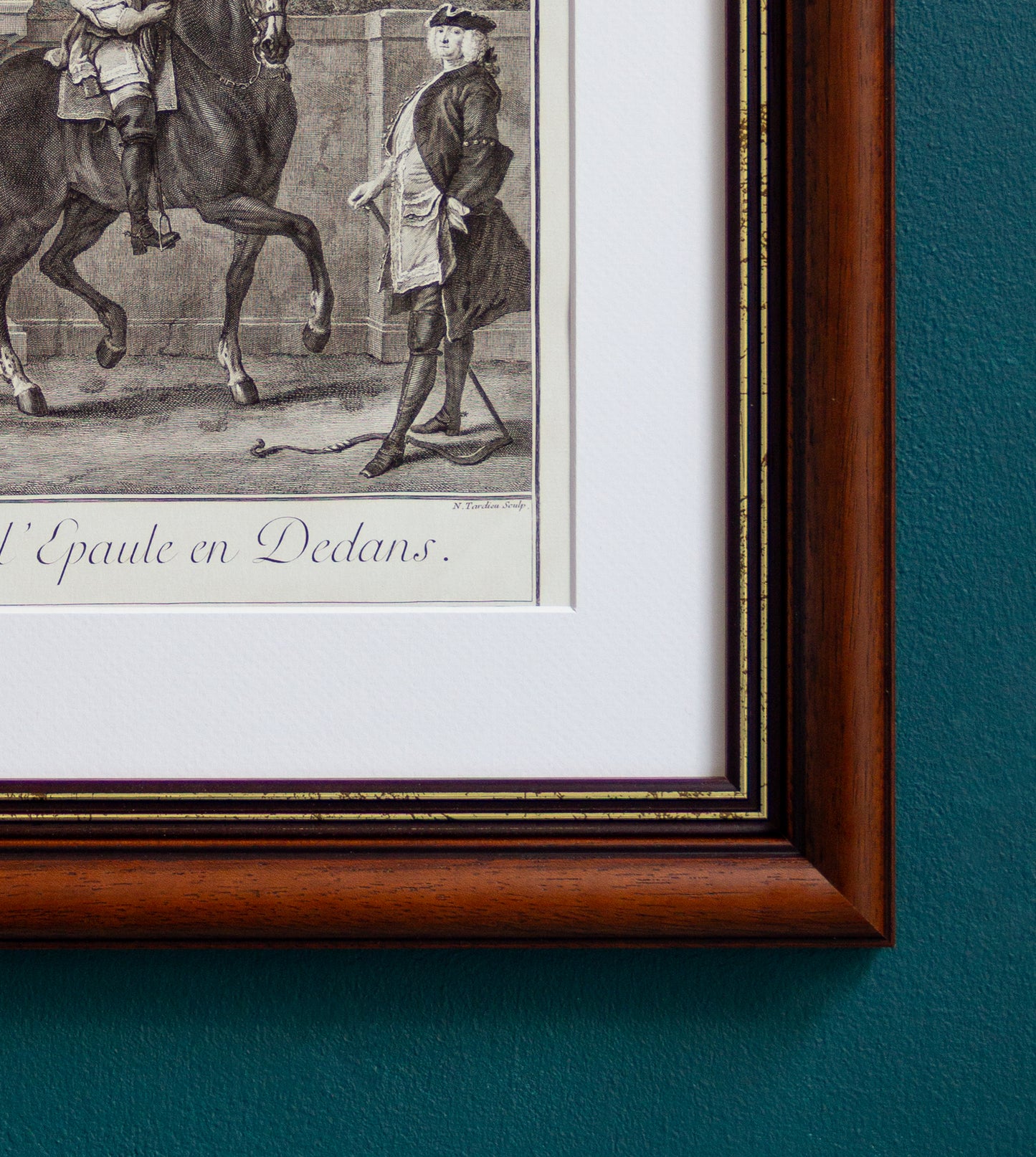
Unlock exclusive access to upcoming collections
Be among the select few to experience our newest collection before anyone else. You can sign up to our email list to receive exclusive updates and the chance to secure your pieces early.

